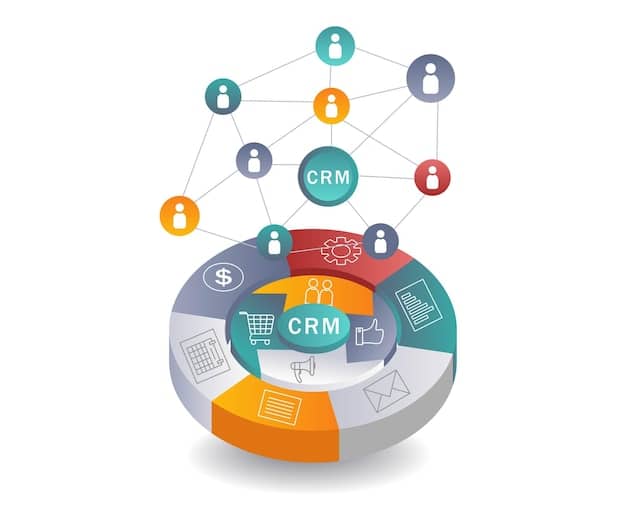Creating a Seamless Omnichannel Customer Experience: Best Practices for Integration

Creating a seamless omnichannel customer experience involves integrating various channels to provide a consistent and unified customer journey, enhancing engagement, satisfaction, and loyalty through strategic best practices.
In today’s digital age, customers interact with businesses through a multitude of channels. Creating a seamless omnichannel customer experience: best practices for integration is no longer a luxury, but a necessity for businesses aiming to stay competitive and meet evolving customer expectations.
Understanding the Omnichannel Customer Experience
The omnichannel customer experience aims to provide a consistent and integrated journey across all available channels. This means whether a customer interacts with a business via its website, mobile app, social media, or in-store, the experience should be seamless and unified.
An omnichannel strategy ensures that customers can pick up where they left off on one channel and continue their journey on another without any disruption. It’s about creating a holistic and personalized experience that fosters customer loyalty and drives business growth.
Key Components of an Omnichannel Strategy
To implement an effective omnichannel strategy, several key components must be considered. These components work together to create a cohesive and unified customer experience across all touchpoints.
- Integrated Technology Stack: A robust technology infrastructure that allows for seamless data sharing and communication between different channels. This includes CRM systems, marketing automation platforms, and e-commerce solutions.
- Customer Data Management: Centralized data management practices to collect, analyze, and utilize customer data effectively. This ensures that personalized and relevant information is available across all channels.
- Consistent Branding: Maintaining a consistent brand message and visual identity across all channels. This helps to reinforce brand recognition and build trust with customers.
- Personalization: Leveraging customer data to personalize interactions and provide tailored experiences. This includes personalized content, offers, and recommendations based on individual customer preferences and behaviors.
Ultimately, implementing these components forms the base of a robust omnichannel customer experience strategy.
Why Omnichannel Integration Matters
Integrating different channels is crucial because customers expect a unified and seamless experience regardless of how they interact with a business. Siloed channels can lead to fragmented and inconsistent experiences, resulting in customer frustration and dissatisfaction.
By integrating channels, businesses can provide a more cohesive and personalized experience that enhances customer engagement and drives loyalty. This integration allows for better data collection, improved customer insights, and more effective communication strategies.

Benefits of a Seamless Omnichannel Experience
A seamless omnichannel experience offers numerous benefits for both customers and businesses. For customers, it provides convenience, personalization, and consistency. For businesses, it leads to increased customer loyalty, higher sales, and improved brand reputation.
- Enhanced Customer Satisfaction: Providing a consistent and personalized experience across all channels increases customer satisfaction and loyalty.
- Improved Customer Retention: Satisfied customers are more likely to stay with a business and make repeat purchases.
- Increased Sales: Omnichannel strategies can drive higher sales by providing customers with more opportunities to engage with a business and make purchases.
- Better Customer Insights: Integrated data collection provides businesses with valuable insights into customer behavior and preferences, allowing for more effective marketing and communication strategies.
With strategies like integrated data collection, businesses can discover valuable insights that allow for improvement.
Best Practices for Omnichannel Integration
To successfully implement an omnichannel strategy, businesses should follow several best practices. These practices focus on integrating technology, aligning teams, and prioritizing the customer experience.
By following these best practices, businesses can create a seamless omnichannel customer experience that drives customer satisfaction, loyalty, and business growth. It’s about creating a customer-centric approach that puts the customer at the heart of every interaction.
Aligning Teams and Breaking Down Silos
One of the biggest challenges in omnichannel integration is breaking down silos between different teams and departments. Marketing, sales, and customer service teams need to work together to ensure a cohesive and unified customer experience. Regular communication, shared goals, and collaborative tools are essential for aligning teams and fostering a customer-centric culture.
Prioritizing Mobile Experience
In today’s mobile-first world, optimizing the mobile experience is critical for omnichannel success. This includes ensuring that websites and apps are mobile-friendly, providing mobile-specific content and offers, and using mobile channels for communication and engagement. A seamless mobile experience can significantly enhance customer satisfaction and drive mobile sales.
Leveraging Technology for Integration
Technology plays a crucial role in enabling omnichannel integration. Businesses need to leverage the right technology solutions to connect different channels, collect and analyze customer data, and personalize interactions.
An integrated technology stack ensures that data can flow seamlessly between different channels, providing businesses with a 360-degree view of the customer. This comprehensive view enables more effective targeting, personalization, and communication strategies.

CRM Systems
Customer Relationship Management (CRM) systems are essential for managing customer data and interactions. A CRM system provides a centralized repository for customer information, allowing businesses to track customer interactions across all channels and personalize communications.
Marketing Automation Platforms
Marketing automation platforms help businesses automate marketing tasks and personalize customer communications. These platforms can be used to create automated email campaigns, personalized content, and targeted offers based on customer behavior and preferences. By integrating a marketing automation platform with other channels, businesses can deliver consistent and relevant messaging across the customer journey.
Measuring Omnichannel Success
Measuring the success of an omnichannel strategy is essential for identifying areas of improvement and optimizing the customer experience. Businesses should track key metrics to assess the effectiveness of their omnichannel initiatives.
By monitoring these metrics, businesses can gain valuable insights into the performance of their omnichannel strategy and make data-driven decisions to improve the customer experience and drive business growth. It’s about continuously evaluating and refining strategies to meet evolving customer needs and expectations.
- Customer Satisfaction (CSAT): Measures how satisfied customers are with their overall experience.
- Net Promoter Score (NPS): Gauges customer loyalty by asking customers how likely they are to recommend the business to others.
- Customer Lifetime Value (CLTV): Estimates the total revenue a customer is expected to generate throughout their relationship with the business.
- Channel Attribution: Identifies which channels are contributing the most to sales and customer engagement.
Businesses need to monitor a variety of metrics in order to ensure success, even CSAT.
Future Trends in Omnichannel Customer Experience
The omnichannel landscape is constantly evolving, driven by technological advancements and changing customer expectations. Businesses need to stay ahead of the curve by embracing emerging trends and adapting their strategies accordingly.
By embracing these trends, businesses can create a truly seamless and personalized omnichannel customer experience that sets them apart from the competition. It’s about continuously innovating and adapting to meet the evolving needs of customers in an increasingly digital world.
Artificial Intelligence (AI) and Chatbots
AI and chatbots are playing an increasingly important role in enhancing the omnichannel customer experience. AI-powered chatbots can provide instant customer support, answer frequently asked questions, and personalize interactions. By integrating AI and chatbots into their omnichannel strategy, businesses can improve customer satisfaction and reduce operational costs.
Augmented Reality (AR) and Virtual Reality (VR)
AR and VR technologies are creating new opportunities for businesses to engage with customers in immersive and interactive ways. AR can be used to provide virtual product previews, enhance the in-store shopping experience, and offer personalized recommendations. VR can be used to create virtual showrooms, immersive brand experiences, and interactive training programs. These technologies can significantly enhance customer engagement and drive brand loyalty.
| Key Point | Brief Description |
|---|---|
| 📱 Mobile Optimization | Ensuring a seamless experience on mobile devices is crucial. |
| 🤝 Team Alignment | Breaking down silos between teams is key to a unified approach. |
| 📊 Data Integration | Centralized data management enhances personalization and insights. |
| 🤖 AI & Chatbots | Using AI can offer real-time support, improving customer satisfaction. |
Frequently Asked Questions
▼
An omnichannel customer experience integrates all channels to provide a unified journey, ensuring consistency and personalization. This helps to enhance engagement and loyalty.
▼
Integration is vital because customers expect a seamless journey across all touchpoints. Siloed channels lead to inconsistent experiences, frustrating customers and reducing satisfaction.
▼
Technology, like CRM and marketing automation platforms, centralizes data and automates tasks, enabling personalized and consistent interactions across all channels, improving targeting.
▼
Key metrics include Customer Satisfaction (CSAT), Net Promoter Score (NPS), Customer Lifetime Value (CLTV), and channel attribution, offering insights into the performance of your strategy.
▼
Future trends involve AI and chatbots for customer support, along with AR and VR to create immersive product experiences, enhancing engagement and brand loyalty.
Conclusion
In conclusion, creating a seamless omnichannel customer experience requires a strategic approach to integration, focusing on technology, team alignment, and customer-centricity. By following these best practices, businesses can meet evolving customer expectations and drive sustainable growth.





